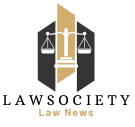Michigan Department of Education
This concentration of learning in a formal atmosphere allows children to learn far more of their culture than they are able to do by merely observing and imitating. As society gradually attaches more and more importance to education, it also tries to formulate the overall objectives, content, organization, and strategies of education. Literature becomes laden with advice on the rearing of the younger generation. In formal education, a curriculum is the set of courses and their content offered at a school or university.
- Access all recorded seminars from SLF 2022 to support your professional learning.
- Numerous definitions of education have been suggested by theorists belonging to diverse fields.
- This proved beneficial for both employers and employees, since the improved human capital lowered costs for the employer, while skilled employees received higher wages.
- The act or process of imparting or acquiring particular knowledge or skills, as for a profession.
We recognise and value the learning that Aboriginal children bring with them from their homes and communities into the classroom. Some 1,600 students had completed a one-year adult education course, gaining essential skills in linguistics and science. Nine community learning centers with trained staff and library facilities, continue to support community literacy and education programs. Getting all children in school and learning requires alignment across families, educators and decision makers.
Take the Curve Out of Learning
If learners have a personal interest in what they are informally being taught, learners tend to expand their existing knowledge and conceive new ideas about the topic being learned. For example, a museum is traditionally considered an informal learning environment, as there is room for free choice, a diverse and potentially non-standardized range of topics, flexible structures, socially rich interaction, and no externally imposed assessments. In the past, those who were disabled were often not eligible for public Education News. Children with disabilities were repeatedly denied an education by physicians or special tutors.
UNICEF leads on global initiatives to connect millions of children and young people to world-class digital solutions so they can leapfrog to a brighter future. Even in schools, a lack of trained teachers, inadequate education materials and poor infrastructure make learning difficult for many students. Others come to class too hungry, ill or exhausted from work or household tasks to benefit from their lessons. This learning crisis – the rift between the levels of learning children receive and those they, their communities and entire economies need – hit a global scale even before the COVID-19 pandemic brought education systems to a halt.
Starting August 15th, visit TXschools.govto discover how your child’s school is preparing them for the next grade level and success after high school. EL Education inspires and empowers teachers to unleash the potential of their students. October 21, 2022 • A federal judge dismissed an effort by six Republican-led states to block the Biden administration’s plan to reduce student loan debt for tens of millions of Americans. October 26, 2022 • Many high school seniors are in the thick of college application season. It’s a stressful time that writer Kelly Corrigan calls a “dumpster fire.” To change that she argues parents have to help less. NPR took the most frequently asked questions readers had about Biden’s student loan relief plan and answered them.
A conversation could save a life
OECD’s annual Education at a Glance looks at who participates in education, what is spent on it, how education systems operate and the results achieved. The latter includes indicators on a wide range of outcomes, from comparisons of students’ performance in key subject areas to the impact of education on earnings and on adults’ chances of employment. This book includes StatLinks, urls linking to Excel® spreadsheets containing the background data.
Early childhood
Post 16 education, adult education and further education involve continued study, but a level no different from that found at upper secondary, and are grouped together as ISCED 4, post-secondary non-tertiary education. Secondary education has a longer history in Europe, where grammar schools or academies date from as early as the 6th century, in the form of public schools, fee-paying schools, or charitable educational foundations, which themselves date even further back. Secondary education in the United States did not emerge until 1910, with the rise of large corporations and advancing technology in factories, which required skilled workers. In order to meet this new job demand, high schools were created, with a curriculum focused on practical job skills that would better prepare students for white collar or skilled blue collar work. This proved beneficial for both employers and employees, since the improved human capital lowered costs for the employer, while skilled employees received higher wages.
However, the correlation between family socioeconomic status and school success or failure appears to have increased worldwide. Long-term trends suggest that as societies industrialize and modernize, social class becomes increasingly important in determining educational outcomes and occupational attainment. An academic discipline is a branch of knowledge which is formally taught, either at the university – or via some other such method.
Historians cite that formal education was mandatory for everyone regardless of social class and gender. Higher education, also called tertiary, third stage, or postsecondary education, is the non-compulsory educational level that follows the completion of a school such as a high school or secondary school. Tertiary education is normally taken to include undergraduate and postgraduate education, as well as vocational education and training.
Our goal is to expand reach of the TOEFL ITP assessment tools to advance access to education opportunities for learners, including international students, in the United States. It involves a wide range of people (curriculum developers, inspectors, school principals, teachers, school nurses, students, etc.). Numerous definitions of education have been suggested by theorists belonging to diverse fields.
